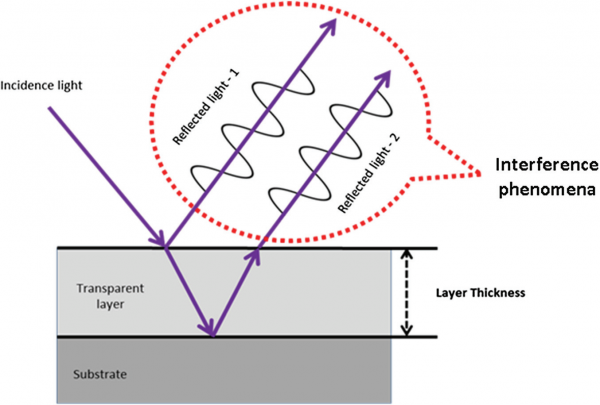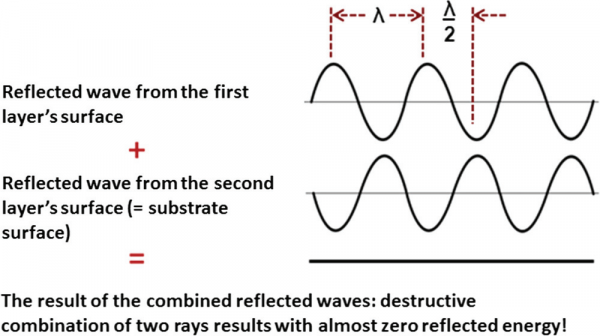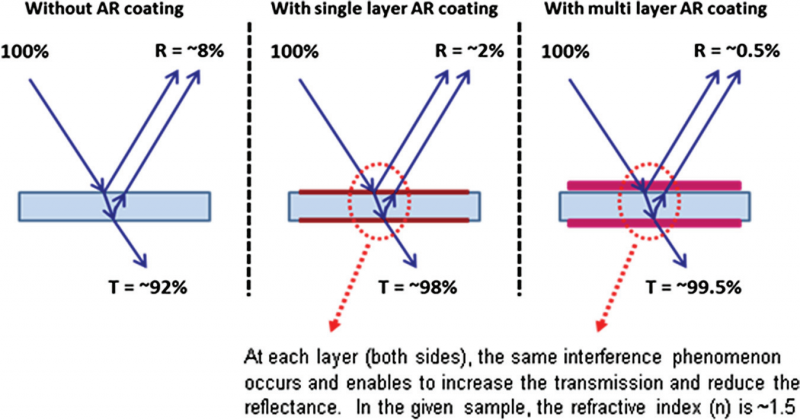What is AR Coating?
The principle of reducing reflection and increasing transmission of light works due to the “interference” phenomenon. In the visible spectrum range, each surface of an optical glass element reflects about 4% energy; thus, if 100% energy enters the first surface, about 92% comes out of the second surface.
This is bad for optics. Table below shows two examples of what happens if more elements (and more surfaces) are in the optical assembly.
| number of surface and energy losses | ||||||||
| n | 1 | 2 | 4 | 6 | 8 | 10 | 12 | 14 |
| 1.5 | 4.00 | 7.84 | 15.07 | 21.72 | 27.86 | 33.52 | 38.73 | 43.53 |
| 1.7 | 6.72 | 12.99 | 24.29 | 34.13 | 42.69 | 50.13 | 56.61 | 62.25 |
The reflection of light from one surface is given by


where N0 is the refractive index of the first medium, and N is the refractive index of the second medium. When the first medium is air (N0 = 1), the reflection from the uncoated surface can be expressed by

For normal incidence light (perpendicular to the surface), the reflection can be calculated by

where m0 is the number of surfaces, and n is the refractive index of the medium (material). But how do the interference phenomena work?
The addition of a layer with a thickness one-quarter of the incidence wave ray produces a delay of one-half-length wave (the light in the transparent layer travels twice the 1/4 layer thickness). This halfway shift causes the reflected rays to cancel each other, which means that there is almost no reflection.

Adding the same layer to the second surface of the substrate generates the same phenomena with less reflection and more transmitting energy; if more than one layer were added to the substrate, the percentage of the transmitted energy can be improved.

